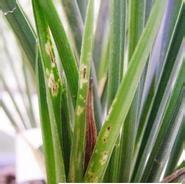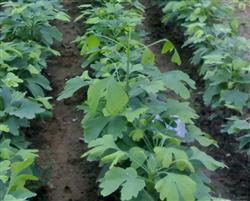Five main aspects of management of ginkgo biloba

After planting, the management of Ginkgo biloba mainly includes soil and fertilization, irrigation and drainage, pruning and pest control. Soil management: mainly deep ploughing and hole expansion, soil improvement, intertillage and weeding. Fertilization management: after ginkgo planting survival, reasonable fertilization should be applied. Ginkgo growth needs 19 kinds of elements, carbon, hydrogen, oxygen can be obtained from the atmosphere and water; nitrogen, phosphorus, potassium, calcium, magnesium are large elements; copper, zinc, iron, manganese, boron, molybdenum, chlorine are trace elements; ginkgo development also needs a small amount of cobalt, iodine, sodium and other beneficial elements. Therefore, ginkgo fertilization is generally based on organic fertilizer, with appropriate ginkgo fertilizer. Fertilization methods can be furrow fertilization, hole fertilization, hole fertilization and sowing. Irrigation and drainage: this is the most critical problem after ginkgo planting. Dry weather, soil water shortage, timely irrigation, generally can do. However, ditching drainage is often neglected, especially for Shanghai, where groundwater level is high and rainfall is high. Planting in pieces, 50~100 cm drainage ditch should be opened on all sides, and small drainage ditch should be opened between rows. The key is that the middle of the ridge surface should be higher, conducive to drainage, must not be depressed in the middle of the ridge, so easy to accumulate water rotten roots. This is often one of the main reasons for the low survival rate of planting. A batch of Ginkgo trees were planted in Shanghai, ranging from 20 cm to 50 cm in height and diameter. Although they had soil balls, the water absorbed by their roots could not meet the consumption of aboveground parts, and the phenomenon of one year living, two years declining and three years dying appeared. Therefore, in addition to drainage and irrigation, rehydration measures can be taken for big trees in the year of transplanting. That is, in the lower part of the tree inclined hole, installed on the pipe, with high-pressure sprayer pressure into the nutrient solution, 5 to 10 days once, the effect is very good, to be completely survived, and then fill the hole. Shaping and pruning: after planting ginkgo trees, in addition to considering some special tree shapes, ginkgo trees should generally be considered tall, straight, symmetrical and beautiful. Because transplant after heavy pruning place, the hair branch is particularly disorderly, so must have the goal to carry on the pruning, specially to overlapping branch, the vertical cross branch, the transverse branch must treat in advance. Keep a certain tree shape. Pest control: Compared with general greening tree species, ginkgo tree diseases are very few, but not without. The main pests in Shanghai City are stinging moth, debt-avoiding moth, tea thrips and ultra-small leaf roller moth. Root rot and leaf blight were the main diseases. Root disease is mainly caused by water at the root. Leaf blight is mainly caused by lack of fertilizer and weak tree vigor, especially root waterlogging. Second, it has a certain relationship with high temperature. The above is a summary of the author's practice over the past 20 years, hoping to help professional workers.
- Prev

Several common orchid viruses and their transmission routes
1. Common orchid virus 1. Cymbidium mosaic virus CymbidiumMosaicVirus referred to as CyMV (1) Cymbidium mosaic virus infected orchid plants often have a tendency to produce gangrene, such as black gangrene spots, gangrene stripes and so on. In addition to the gangrene in the leaves and stems of susceptible plants, the flowers are also.
- Next

Seedling raising technique of hardwood cutting of Ginkgo biloba
The common seedling raising methods of Ginkgo biloba are sowing, cutting, root tillering and grafting, etc. Cutting seedlings of Ginkgo biloba can not only save seeds and reduce seedling costs, but also speed up seedling breeding and maintain the excellent characteristics of varieties. Hardwood cuttage is a kind of cuttage with more than 1-year-old branches with a high degree of Lignification.
Related
- Fuxing push coffee new agricultural production and marketing class: lack of small-scale processing plants
- Jujube rice field leisure farm deep ploughing Yilan for five years to create a space for organic food and play
- Nongyu Farm-A trial of organic papaya for brave women with advanced technology
- Four points for attention in the prevention and control of diseases and insect pests of edible fungi
- How to add nutrient solution to Edible Fungi
- Is there any good way to control edible fungus mites?
- Open Inoculation Technology of Edible Fungi
- Is there any clever way to use fertilizer for edible fungus in winter?
- What agents are used to kill the pathogens of edible fungi in the mushroom shed?
- Rapid drying of Edible Fungi

